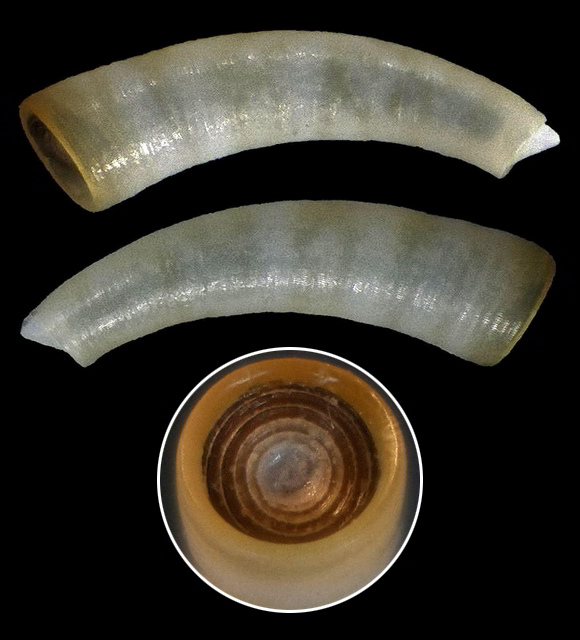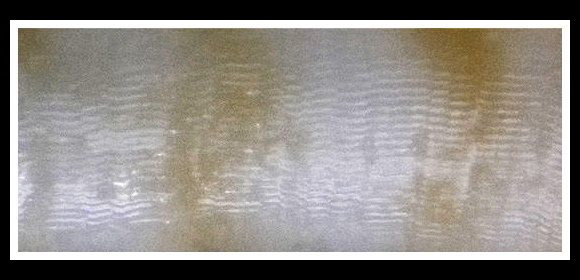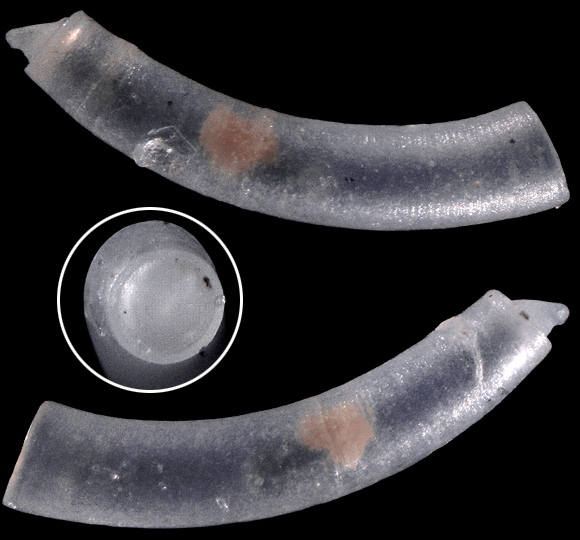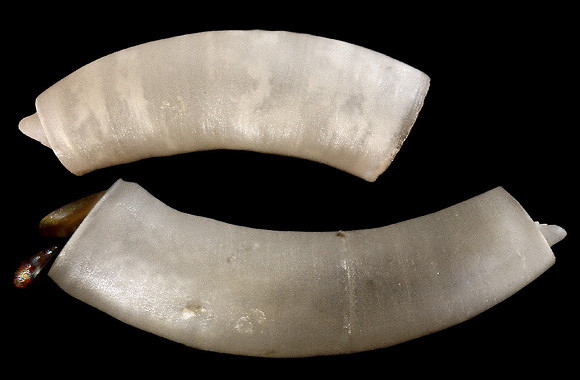
La Franqui shallow sands, Leucate, Occitania, S. France. 1,6mm. Detail of the aperture: the circle measures 500µm. Original pictures provided by S. Clanzig (FR).
– (CC BY-NC-SA) –

« Solid, opaque, smooth, slightly arched with enlarged aperture. Septum protruding, not sharp, conical. »– T. A. di Monterosato: Nomenclatura generica e specifica di alcune conchiglie mediterranee, Palermo 1884, p.79.
Caecum semitrachea Brusina ms.:
« Thinner but longer than the previous one, crystalline and transparent, to be confused with the young one of C. rugulosum, but which is distinguished by being cylindrical and not funnel-shaped nor so arched, which indicates the last period of growth. Edge of the aperture barely enlarged. The appendix of the septum has a curved tip. » – T. A. di Monterosato: op. cit. p.80.
Detail of the microsculpture. The frame measures 600µm. Original picture provided by S. Clanzig (FR).
– (CC BY-NC-SA) –


The description of clarkii by the same Carpenter is based on comparisons with vitreum: « Similar to vitreum but smaller, more rounded; septum nail-shaped; apex more obtuse […] It is named after the first discoverer of the animal in this interesting genus. » – P. P. Carpenter: “First steps towards a monograph of the Caecidae”, Proceedings of the Zoological Society of London vol. XXVI 1858, London 1859, p.432.